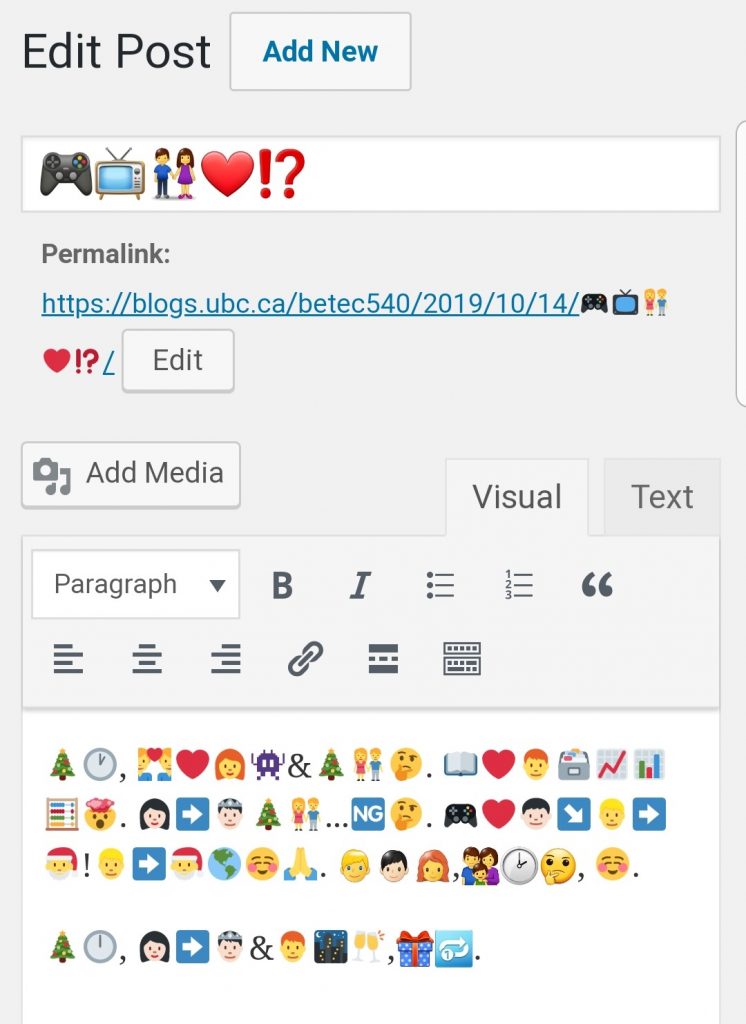Based on the music that we chose for the previous task, the members who chose tracks similar to me included Stephanie and Saniya. All of us focused on conveying as much information as possible and acknowledged the importance of a diverse track list; though we went about it in different ways.
While we may have been grouped as “like-minded” along these parameters, a closer look at all of our websites reveals how different we are. I can tell from Saniya’s Task 4 writing that she is right-handed; I am left-handed. Not being able to make mistakes intimidates her; I’ve embraced mistakes as something to be proud of, proof of my consideration and possibilities to grow. Her story in Task 3 and even the colour palette of her website prove how different we are (if I ever voluntarily told a cutesy story about a bunny, it’s safe to assume I’ve been replaced with a clone). Even less likely would I pick a white background as Stephanie did – I avoid white digital backgrounds and themes as much as possible, and dim my phone to the lowest setting, to keep from aggravating my eyes. However, on the whole I think Stephanie and I are quite similar. The contents of her bag, the way she analyzes texts and tasks is similar to mine.
I don’t believe the things we have negated will ever be reflected in analytical data, however, I would like to comment that we do not necessarily have control over how much of us is analyzed. Consider that we, as school staff, cannot take or share any photos that identify students, for the sake of their privacy. However, the press is not bound by these rules, and freely take candid photos of students at events and ceremonies and publish them in the paper and online, identifying students and teachers in the caption. I’ve seen my own photo come up when searching the name of the school online; I don’t even know who took it or when. Facebook and Google’s auto-tagging of faces is another example. The information about ourselves that ends up online, or that can be analyzed, is not always within our control, which can lead to a skewed perception of (and potentially dangerous) situation for us.

